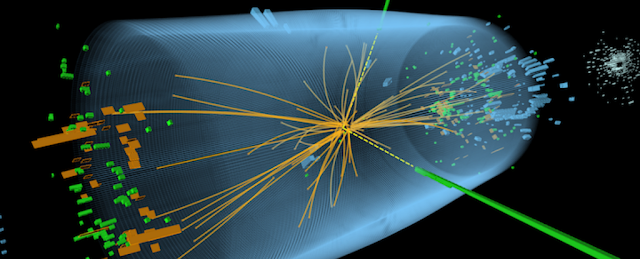Two separate groups of physicists working with the Large Hadron Collider in Switzerland have distinguished indications of another basic molecule of nature. While theories proliferate in respect to what precisely this molecule could be - in the event that it exists by any means - the most well-known assessment is by all accounts that it's a heavier variant of the Higgs boson, the molecule that clarifies why different particles have mass.
"I don't think there is anybody around who thinks this is definitive," one of the scientists, Kyle Cranmer from New York University, told The New York Times. "In any case, it would be enormous if genuine."
After a rest of over two years, the LHC has started up again in June to keep crashing particles together - this time at record-breaking vitality levels of around 13 trillion electron volts. (On the off chance that you're pondering, an electron volt is a unit of vitality equivalent to roughly 1.602×10-19 joules, and 6.5 trillion electron volts is double the vitality level used to identify the Higgs boson without precedent for 2012.)
From that point forward, both the CMS and ATLAS indicators at the LHC have recorded a spike in movement at a specific vitality level, comparing to around 750 gigaelectronvolts (GeV) - or about 750 billion electron volts.
Discovered covered up in the flotsam and jetsam of proton-proton impacts, this unexplained sign could be the indication of another molecule that takes after the Higgs boson, just it'd associate with 12 times heavier, with a mass of 1,500 GeV.
"At the point when all the measurable impacts are mulled over ... the knock in the Atlas information had around a 1-in-93 possibility of being a fluke - far more grounded than the 1-in-3.5-million chances of negligible chance, known as five-sigma, considered the highest quality level for a disclosure," Dennis Overbye composes for The New York Times. "That won't be sufficient to try exhibiting in a discussion, with the exception of the way that the contending CERN group, named CMS, discovered a knock in the same spot."
So, the measurable criticalness of what they found was still low, with Davide Castelvecchi reporting for Nature that ATLAS distinguished around 40 sets of photons over the numbers anticipated from the standard model of molecule material science, and CMS saw just 10. When you consider that depends on information gathered from somewhere in the range of 400 trillion proton-proton impacts, it's sheltered to say these particles are either super uncommon, made under amazingly hard-to-reproduce conditions, or don't exist.
We'll have a superior thought of what's really going ahead in around six months' opportunity when the groups are relied upon to have accumulated around 10 times as much information as they do well at this point. Yet, in the event that they can affirm the presence of what one of the analysts, Maria Spiropulu from the California Institute of Technology (Caltech), called, "a 750-billion-electron-volt mammoth rotting to two photons", it'll be up to the theoretical physicists of the world to clarify it.
- Blogger Comment
Subscribe to:
Post Comments
(
Atom
)

0 comments:
Post a Comment